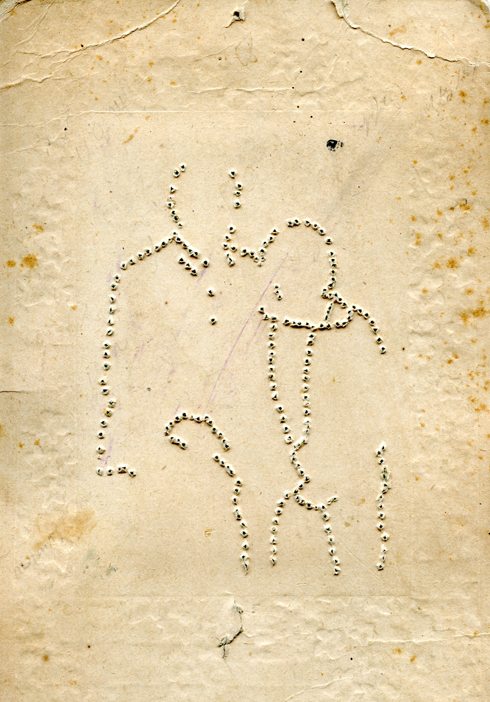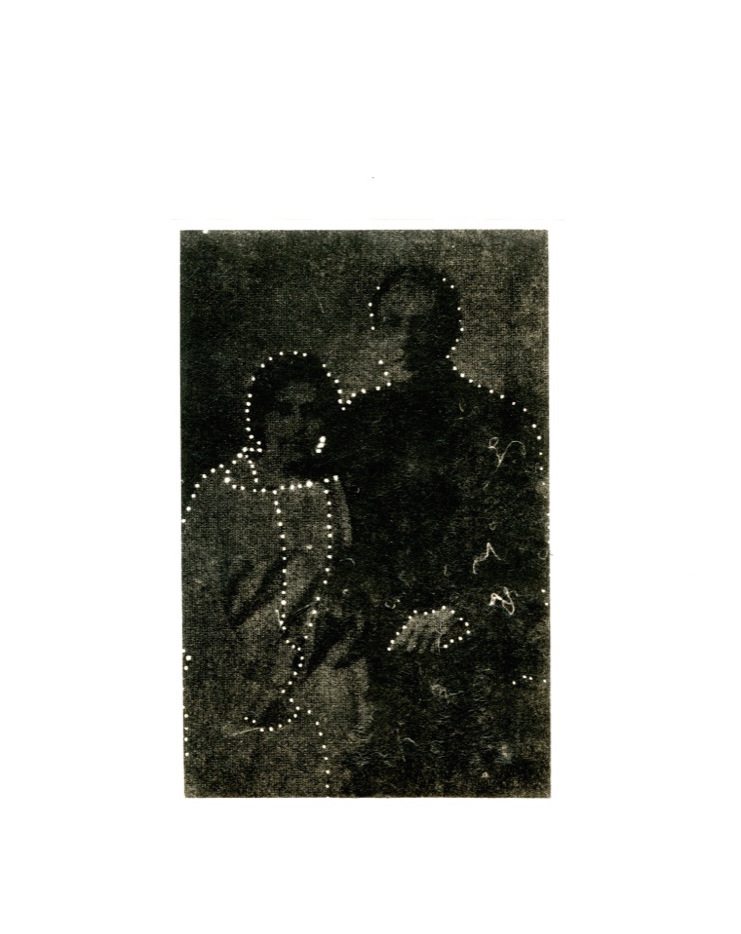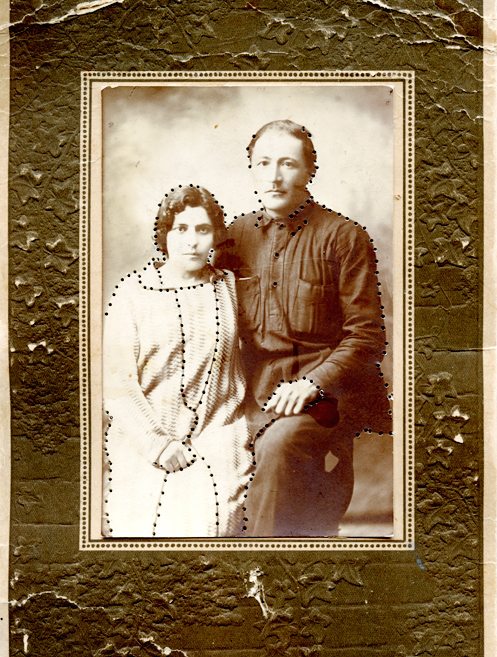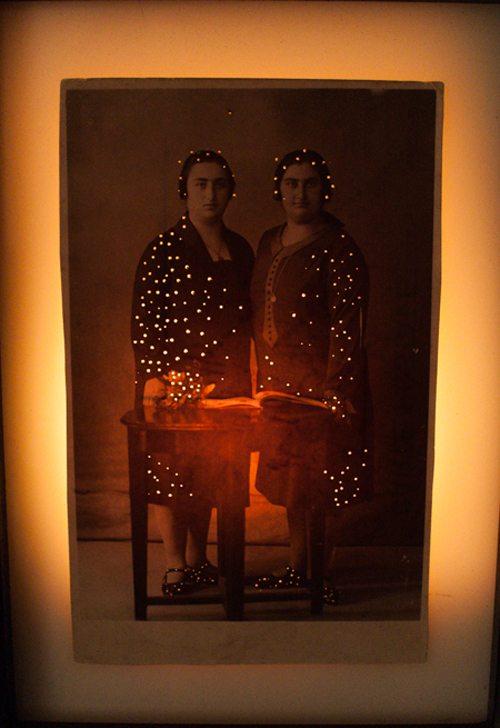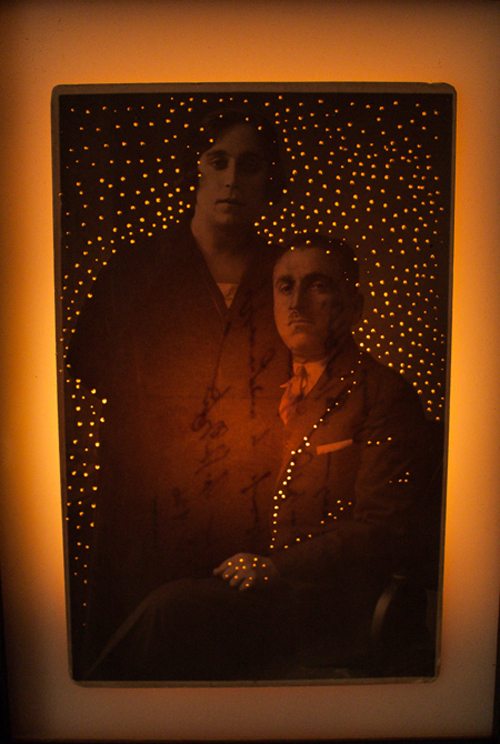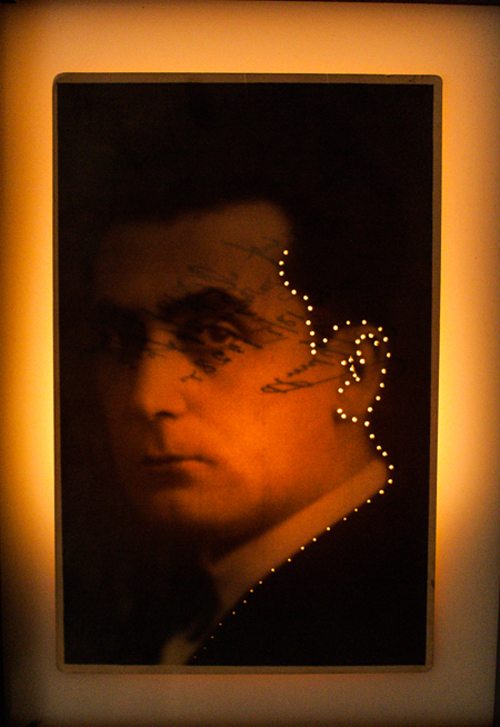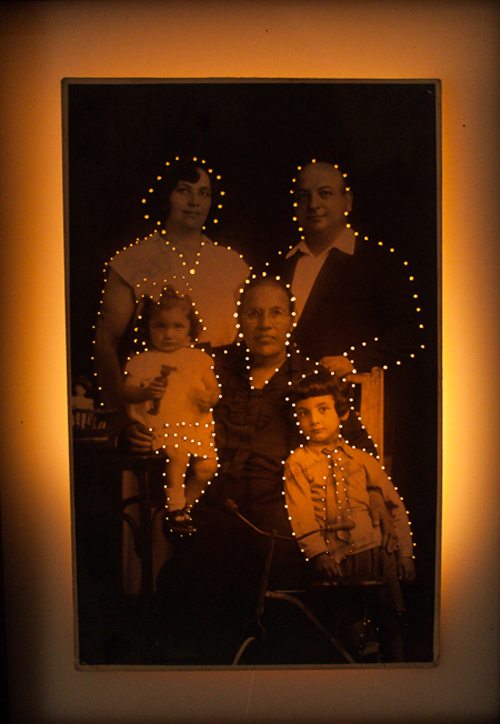Enlightened memory
A photograph of an unknown Armenian couple, found at a flea market in Yerevan. This is what started Cassandra Tavukciyan’s work with illuminating old family portraits.
“For my final undergraduate piece, I drew on my Armenian-Canadian background to explore how the inheritance of collective trauma and memory is understood and represented through archived photographic materials. This project was my initial response to an old photograph of an Armenian couple that I discovered at a flea market in Yerevan. I’ve always kept it tucked away in a box as a reminder of my first trip to Armenia in 2010. The photograph had no date, location or name on it at all. I always wondered about these people – who they were, what kind of life they lived – and I knew that one day I would want to use it in my work.
I often photograph my family, but had come to a point where I wanted to explore new ideas through the medium of photography. I was interested in examining the role of the ‘family’ as a broader subject, and more specifically within the visual framework of contemporary effects of displacement, resettlement and the interrelationship between memory and history. I started researching Armenian subjects in old photographs, which grew and expanded as I began to find more images online.
I felt that I wanted to re-photograph the people in these photos, bringing them back to life. I also wanted to play with light as the subject, which led me to puncturing holes through the original photographs, letting the light illuminate and intervene with the figures – literally bringing them into light again, after so many years in darkness. The holes punctured in the photographs differ, figuratively and abstractly, depending on each photograph. Through my artistic intervention, the authorship of the images is shifted and they become objects in a new context.
This work, and the fact that the people in the photographs are of Armenian descent, relate to my own identity as an Armenian-Canadian. They also reflect upon the erasure and disappearance of Armenians from history. Working with the images was a way for me to create my own personal family album, referencing symbols of Armenian belonging: old religious paintings, and the warmth of prayer candles that are often burned as a votive offering in Armenian churches. Through the ‘disfiguration’ of the mark making, these photographs – permanently altered and lost from their original context and purpose – have not been destroyed, but rather taken on a new meaning and life.”








